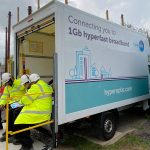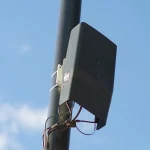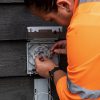Survey Suspects UK Broadband ISPs Profit from Confusing Jargon

Do you know your FTTPs from your Gigabits, FTTC and ADSL? A new survey of 2,008 UK broadband customers, which was conducted between 18th to 20th October 2023 by Broadband Genie, has found that 63% feel internet providers use “confusing language” and 54% believe they “hide behind baffling jargon to squeeze more money out of customers“.
The survey presented respondents with a range of terms used by broadband ISPs on their websites, in contracts, and in their advertising, and asked if they could confidently explain what each meant. But none of the terms was fully understood by more than half of the respondents and 30% couldn’t define “broadband” itself (in fairness, broadband is quite a fluid term and doesn’t have a particularly solid definition).
Similarly, the survey found that only 5% of consumers understand the term FTTP, while 46% admitted they don’t know the difference between “superfast” and “ultrafast” speeds. Once again, the latter isn’t too surprising because the definitions do differ, depending upon when they’ve been used and by whom.
Advertisement
For example, most people and network operators have historically defined “ultrafast” as starting at 100Mbps (download), but Ofcom oddly uses 300Mbps+. As for “superfast“, today it usually means 30Mbps+, but in the past it meant 24Mbps+. And don’t even get us started on the abuse of “fibre broadband” terminology, which is something that the regulator may soon clampdown on (here).
Additional Survey Results
➤ 73% of people aged 65 and over are confused by broadband terminology – the highest of all age groups – compared with 56% of those aged between 25 and 34-years-old.
➤ Only 17% are confident they know the difference between fibre and full fibre.
➤ When it comes to the ISPs, 74% of Plusnet customers express the desire for clearer broadband terminology – the highest out of the main broadband providers – compared with 55% of Vodafone customers.
➤ 31% admit they have been put off from switching broadband providers or signing up to a new deal because of the confusing language.
The survey then helpfully includes somewhat of a jargon buster to clarify what each term means, although this does make the odd mistake. For example, gigabit broadband isn’t just “typically only available in locations” with FTTP and can, in fact, also be delivered to over half of the country via Virgin Media’s older Hybrid Fibre Coax (HFC) network. Not to mention that various wireless networks can also achieve 1Gbps+ speeds.
|
Broadband term
|
% of people who understand what it means
|
What it actually means
|
|
FTTH
|
3.4%
|
FTTH stands for Fibre to the Home – a type of very fast broadband connection using fibre-optic cables to transmit data directly to an address. It can be known as full-fibre broadband.
|
|
4.0%
|
FTTC stands for Fibre to the Cabinet – a type of connection using fibre-optic cables transmitting data to street cabinets rather than directly to homes. The connection is then typically continued to an address using older copper cables. This can be known as fibre broadband, and speeds are slower than a full-fibre solution like FTTH or FTTP.
|
|
|
FTTP
|
4.8%
|
FTTP stands for Fibre to the Premises. This is effectively the same as FTTH and can be known as full-fibre broadband.
|
|
Gigabit broadband
|
5.8%
|
Gigabit broadband is a network connection with a speed of at least 1 gigabit per second – the equivalent of 1,000 Megabits per second. Gigabit speeds are typically only available in locations with fibre-to-the-premises (FTTP) connections.
|
|
Fair use policy
|
7.9%
|
A Fair use Policy (FUP) is a limit placed on broadband usage by a provider, even for those with unlimited plans. It limits excessive data use at peak times, so there’s enough bandwidth for everyone online.
|
|
Openreach network
|
8.0%
|
|
|
Bandwidth
|
8.8%
|
Bandwidth refers to the maximum capacity of your internet connection. If video streaming in HD uses “a lot of bandwidth” it means a lot of your connection’s data transfer capacity is being taken up and other activities will be slower.
|
|
Mb or Mbps
|
10.3%
|
Megabits per second (Mbps or Mb) is a unit of measurement for data transfer speed, typically used to describe internet connection or network download/upload rates.
|
|
Ultrafast broadband
|
14.3%
|
Ultrafast broadband refers to an extremely high-speed internet connection, typically exceeding 300Mbps, which can range up to Gigabit speeds, providing swift data transfer and download/upload capabilities.
|
|
Superfast broadband
|
16.2%
|
Superfast broadband refers to an internet connection with download speeds from 30Mbps up to about 100Mbps.
|
|
Broadband
|
30.1%
|
Broadband is a high-capacity, high-speed internet connection that allows for the simultaneous transmission of a wide range of digital data, such as text, audio, and video, over a single connection.
|
All of this helps to explain why most ISPs prefer to use general broadband speeds to illustrate their packages, since a simple numerical value is often a lot simpler to understand than the many different acronyms and terms used to describe different connection technologies, service policies and methods.
As mentioned briefly earlier, Ofcom are due to propose new guidance that will require ISPs to provide clearer descriptions of the broadband technologies being used. In the case of “fibre” based connections, this would mean providers using one or two terms, such as ‘fibre’, ‘cable’, ‘full-fibre’, ‘copper’ or ‘part-fibre’, in a consistent way. Crucially, ‘fibre’ and full-fibre’ would only be allowed to reference FTTP.
Advertisement
The approach is welcome, although it does leave open a question mark over how some networks, such as those using Fibre-to-the-Building (FTTB) solutions for part of their network (e.g. Hyperoptic), should implement this. FTTB does bring a fibre optic cable into the building, but in an apartment block the last few metres might still be tackled via copper-based Ethernet cable and a lot of that is Cat 5E or older cable, which can’t handle speeds above 1Gbps.
Mark is a professional technology writer, IT consultant and computer engineer from Dorset (England), he also founded ISPreview in 1999 and enjoys analysing the latest telecoms and broadband developments. Find me on X (Twitter), Mastodon, Facebook, BlueSky, Threads.net and Linkedin.
« O2 UK Offers More than Double Data Across All PAYG Plans
MS3 UK Completes FTTP Broadband Network in Scunthorpe »






















































63% feel internet providers use “confusing language” and 54% believe they “hide behind baffling jargon to squeeze more money out of customers“.
Not with UnchainedISP – always great service top service top level top support and speed spot on all day 24/7/365.
I am so glad am technically savvy because it was like with Vodafone. When it went Live in April 2023 I made a call to Vodafone to upgrade from slow FTTC to FTTP the Vodafone representative just said you have full fibre he was trying all technical but I knew better.
As long as Netflix works without buffering most customers couldn’t care less what it is. When Openreach or an altnet install full fibre most people I speak to invariably say “we’ve got fibre” because that’s what they were told when they got FTTC.
Yep, you have hit the nail on the head.
Agreed, this survey proves that all the jargon that operators use to try to distinguish themselves just makes it worse.
Most regular people just see broadband as WiFi, and if the “WiFi” works and gives reasonable value then they are happy. People want to pay for access to things that help or entertain them. They don’t want to pay for “fibre” “fttsomething” or gigabit nonsense. That’s just technology companies (plus Ofcom, plus DSIT) obsessing over technology instead of obsessing over end users.
I spent some years as an active member of a certain ISP’s help forum, and I’m surprised awareness of terms is even as high as this survey reports. A good half of customers seeking help simply used the term wifi to mean every aspect of their broadband connection and household network, and had no understanding of the differences.
Yup, “my WiFi”. I don’t even argue any more. This survey has only found that people are… not really on the ball.
Why is this such a problem in the UK and not in other countries?
Elsewhere you see ISPs happily using the correct technical terms instead of patronising nonsense like “full fibre”.
The best example of needless “oversimplification” to me is the webpage that checks if your smart meter is SMETS1 or SMETS2. The explanation it gives as to why it may not be SMETS2 is more confusing than if they’d actually used those two technical terms:
“If you’ve got a smart meter and you’re getting accurate bills
This means your meter’s working in smart mode, so it’s sending automatic readings to your supplier. It isn’t on the smart meter data network, which connects your smart meter to energy suppliers.”
How can it be working in smart mode if it is not on the smart meter data network? Why can’t they just say “first generation meters use a network that only certain suppliers can use, second generation meters work with all suppliers. You have a first generation meter and this needs a software upgrade or replacement to work with any supplier”.
I think cat5e should be good for 2.5GBaseT?
Officially, it’s only rated up to 1Gbps, so you really need Cat 6 and beyond to be able to guarantee that sort of speed or faster. Technically, the cables themselves might handle faster rates, but experiences will vary and that makes it difficult for ISPs to make performance promises when such cables are involved. 10Gbps is out of the question on Cat 5e.
5e must support 2.5GBASE-T for the same distance as gigabit to be 5e: it was designed for that cable specification. 6 is required for 5GBASE-T.
If they put in any ‘5’ without the ‘e’ it could get spicy, though.
Sorry, but in what universe does Mb (megabit) equate to megabits per second (Mbps, or Mb/s)? One is a rate and one isn’t. One is a measure of information content and one is a measure of the rate of transfer of that information content. And I inwardly smile (and cringe if truth be told) when I see some respondents say they have “x” mbps broadband.
Black Friday Sales, Santa’s Present, New Year Deals, Easter Bunny Discounts, Summer Giveaways, Autumn Savings, to mention but a few, all trickery! If you live in certain areas and have access to a Altnet for Broadband then you’re lucky, otherwise you’re Stuffed. The majority of people haven’t a clue when it comes to the type of Broadband they receive, and the Broadband Companies Dine Out on this.
Even Cityfibre’s marketing department seem to be confused by the jargon.
I read one of their adverts on Facebook talking about moving to their network to avoid fighting with your family members for ‘Strong WiFi’.
Firstly Cityfibre don’t sell any WiFi products and secondly a strong WiFi signal doesn’t mean a fast internet connection!
Catering to the folks Andrew G mentioned: https://www.ispreview.co.uk/index.php/2023/11/survey-suspects-uk-broadband-isps-profit-from-confusing-jargon.html#comment-294621
A major promoter for allowing confusing “fibre broadband” terminology is the ASA which simply hasn’t done its job, allowing for copper VDSL lines to be called fibre.
Might want to redirect your ire towards Virgin for that one, as they were doing it back when BT considered ADSL2 to be the latest and greatest – https://informitv.com/2008/02/06/virgin-media-cleared-over-misleading-broadband-claims/
These sort of surveys explain why the country is going down the drain, it’s like the majority of the population is functionally retarded.